calsfoundation@cals.org
Marion (Crittenden County)
| Latitude and Longitude: | 35º12’52″N 090º11’47″W |
| Elevation: | 225 feet |
| Area: | 20.04 square miles (2020 Census) |
| Population: | 13,752 (2020 Census) |
| Incorporation Date: | April 19, 1851 & March 5, 1896 |
Historical Population as per the U.S. Census:
|
1810 |
1820 |
1830 |
1840 |
1850 |
1860 |
1870 |
1880 |
1890 |
1900 |
|
– |
– |
– |
– |
– |
– |
– |
– |
– |
– |
|
1910 |
1920 |
1930 |
1940 |
1950 |
1960 |
1970 |
1980 |
1990 |
2000 |
|
– |
– |
– |
758 |
883 |
881 |
1,431 |
2,996 |
4,391 |
8,901 |
|
2010 |
2020 |
|
|
|
|
|
|
|
|
|
12,345 |
13,752 |
|
|
|
|
|
|
|
|
Marion is located in eastern Crittenden County, along the Mississippi River. Marion became the county seat in 1836 thanks largely to better accessibility than the original county seat of Greenock, combined with a donation of land by the Talbott family for the purpose of building a courthouse. The fourth Crittenden County Courthouse, completed in 1911, is listed on the National Register of Historic Places.
Pre-European Exploration through European Exploration and Settlement
Marion’s history can be traced back to its settlement by Native American tribes, including the Quapaw. Spanish exploration of the region occurred in the 1500s, and Spanish land grants in the area that is now Marion were later granted to Francis Gragen and Justo Mecham. Fort Esperanza, established in 1797, was commanded by Augustine Grandee. The French government for a short time controlled the area, until the Louisiana Purchase added the land to the United States. Grandee remained in the area and settled near Marion Lake (then known as Alligator Lake or Cypress Lake), which flowed into the Mississippi River. Marion Lake was a lifeline for the area, which then included Mound City (Crittenden County) and Hopefield (Crittenden County). In 1918, the lake was drained, creating between 600 and 800 new acres of farmland. All that remains of the lake is a drainage ditch.
Louisiana Purchase through Early Statehood
The origin and first usage of the name of Marion is unknown. The name was in use when postal service began there in 1829, and correspondence concerning the completion of the first courthouse in 1834 suggests the name was well established by then. Marion had been chosen as the county seat when Crittenden County was established in 1825, but county business did not begin to be conducted in the city until 1836. The center of Marion was the Military Road to the southwest of Marion Lake. A marker along Military Road recognizes its utilization as part of the Trail of Tears in the 1830s. Marion was first incorporated as a city on April 19, 1851, but the incorporation lapsed during the Civil War and had to be renewed twice—first in 1868, and again on March 5, 1896. Early prominent Marionite families included the Burgett, Cherry, Fooy, and Welch families, along with William Russell, a St. Louis, Missouri, land speculator who promoted settlement in the area. Robertson P. Tally became the town’s first mayor in 1851.
On the southern edge of the New Madrid Fault zone, the area was rocked by earthquakes in 1811 and 1812, with further significant seismic activity occurring in 1847, 1895, and nine other occasions with quakes measuring 5.0 or higher on the Richter Scale. Tornadoes and violent storms are common in the area as well.
Marion, like Memphis, Tennessee—its neighbor across the Mississippi River—developed a reputation for unruliness. The ferry landing at Hopefield was known as a haven for drinking halls, gambling, horseracing, and robbery; however, the traffic of local inns and rooming houses was indicative of a steady rate of growth as Marion’s population rose throughout the 1800s. Prominent farming families at this time included the Fogleman, Hodges, and Pirani clans. Some of the businesses in operation at this time included L. D. Rhodes’ Livery Stable and Samuel Gilbert’s Tavern. A general store operated by Sanford Isaac Newman was still in operation until 1984, when it burned. The first levees to protect the city were three-foot-tall earthworks erected during the 1850s, but they were washed away by floods in 1858 and 1859.
Civil War through the Gilded Age
The Civil War brought upheaval to Marion’s society, with many of the town’s residents serving in the Confederate army. Municipal government all but disappeared for the duration. Reconstruction was not well received in Marion. When the newly liberated African-American population gained a majority of the elected positions in the town and county, there was outrage and disdain. Ku Klux Klan–led terrorism and racial antagonism that led to martial law being in place in Marion for a few months in 1869. In 1888, city and county governments were overturned by threats and violence, and African-American leaders who did not flee voluntarily were forcibly deported to Memphis. Afterward, Jim Crow laws ensured white control of the government in Marion well into the civil rights era in the second half of the twentieth century.
Eventually, the railroad became important to the continued growth and prosperity of Marion. Two railroads were established along Marion’s borders beginning in 1853. These lines were connected with other national lines in the 1880s, many of which are still in operation as part of the Burlington Northern and Union Pacific railroad lines. Also in the 1880s, roads that had been established but largely unimproved since the 1820s were widened and reinforced.
Early Twentieth Century
With the advent of automobile use in the early 1900s, many state and federal highways were built through Marion and Crittenden County. U.S. Highways 61 and 63 brought north- and southbound traffic through the area, while U.S. 70, known as the “Broadway of America,” was a major east-west thoroughfare. These were largely supplanted in the 1950s by two of the nation’s busiest interstates, I-40 and I-55, which intersect two miles south of Marion.
In 1910, two African American men were lynched by a mob of 300 after a jailbreak resulted in the escape of twelve prisoners.
Marion has endured a great number of disasters in its history. Flooding was a recurring problem, most notably in the flood of 1912, when the original levees overflowed. Surprisingly, the levees held during the historic floods of 1927 and 1937, but they could not prevent further floods in 1964 and 1987. Fires were a major problem in Marion’s early days, especially before the first fire department was established in 1931. The courthouse burned twice, and many hotels, businesses, and homes were lost due to the reliance on “bucket brigades.”
World War II through the Modern Era
Following World War II, Marion’s population grew steadily, nearly doubling from 1940 (758) to 1970 (1,431), though commercial and industrial growth was largely stagnant. The primary focus remained on agriculture, with many residents commuting to Memphis. Marion is included in the Memphis metropolitan area, which is one of the nation’s twenty largest metropolitan areas. Marion’s first real attempt to stimulate commercial development began in the 1970s with the building of the Marion Shopping Center, a new post office, and other new businesses, including law offices, a dentist’s office, a pharmacy, and several banks. Prominent figures in this period include Mayor Eddie Bigger Jr., educator James H. Carter, banker Philip Brick, Cy Bond Sr., and Cy Bond Jr.
Two unsolved killings during the civil rights era have attracted significant attention. First, in 1954, a Black landowner named Isadore Banks was found murdered and set afire outside of Marion. Second, in 1963, a young, unarmed Black man named Andrew Lee Anderson was killed while pursued by a sheriff’s posse.
A new wave of commercial development beginning in the 1990s brought national chains to Marion, as well as auto parts manufacturer Hino Motors and a major distribution hub for Family Dollar stores. Along with this growth came a tremendous population boom. From 1980 to 2006, Marion’s population grew from just under 3,000 to nearly 11,000. In 2005 and 2008, Marion was a finalist for the location of a Toyota Motors manufacturing plant. A new commercial center, Angelo’s Grove, has begun to attract new businesses, and new residential subdivisions are being built at a rapid pace. The Sultana Disaster Museum opened in Marion in 2015. In June 2024, Hino Motors announced the eventual closure of its Marion plant, a move affecting approximately 1,300 employees.
Education
Established in 1869, the Marion School District grew in a series of fits and starts, with no high school curriculum until 1911, but the school system went on to develop a reputation for academic achievement. The first area school built for African Americans was in the nearby town of Sunset. It began classes in 1925 but did not offer high school classes until 1934. Integration of the schools began in the 1964–65 school year. Through consolidation, the district was enlarged in 1947 to include Jericho (Crittenden County) and Clarkedale (Crittenden County). In 1953, it added a subdivision of West Memphis (Crittenden County) and Lake Shore Trailer Park. It was enlarged once again in 1968 with integration. In 2003, the Crawfordsville School District was consolidated with Marion. In 2017, the Marion School District had an enrollment of about 3,900 students.
Notable Figures
Arkansas Supreme Court justice John Albert Fogleman was reared in Marion. Pro wrestler Sid Vicious lives in Marion. Ray Brown, an offensive lineman for various teams in the National Football League (NFL), was born in Marion. John Gammon Jr. was a founder and first president of the Arkansas Negro Farmers Association, in addition to being a rural civil rights activist who challenged segregated schools
For additional information:
Marion Chamber of Commerce. https://www.marionar.org/ (accessed April 22, 2023).
Marion School District. http://www.msd3.org/ (accessed April 22, 2023).
Woolfolk, Margaret. History of Crittenden County, Arkansas. N.p.: 1991.
Ralph Hardin
Marion, Arkansas
Staff of the CALS Encyclopedia of Arkansas
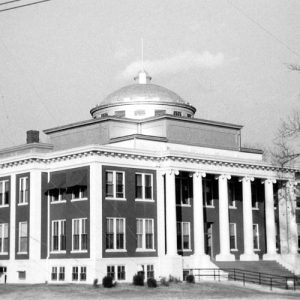 Crittenden County Courthouse
Crittenden County Courthouse  Crittenden County Map
Crittenden County Map 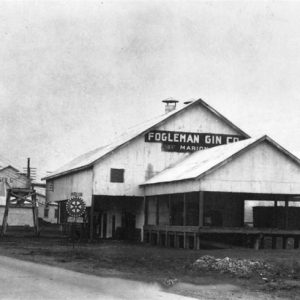 Fogleman Gin
Fogleman Gin  Asa Hodges
Asa Hodges 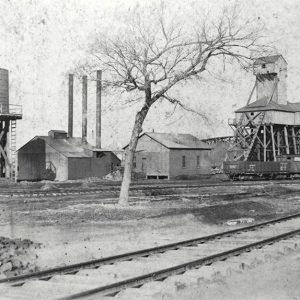 Ice Plant
Ice Plant 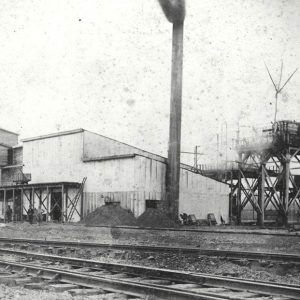 Ice Plant
Ice Plant  Sultana Disaster
Sultana Disaster 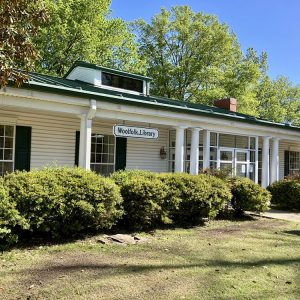 Woolfolk Library
Woolfolk Library 



Comments
No comments on this entry yet.